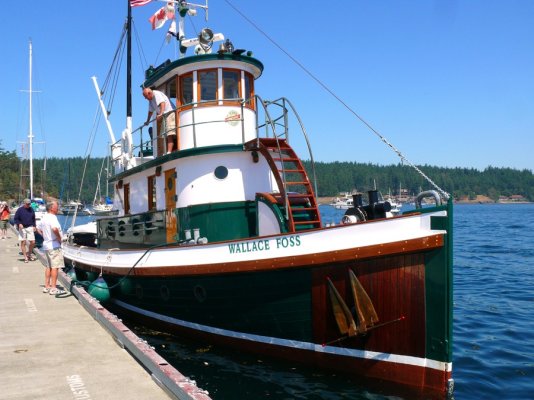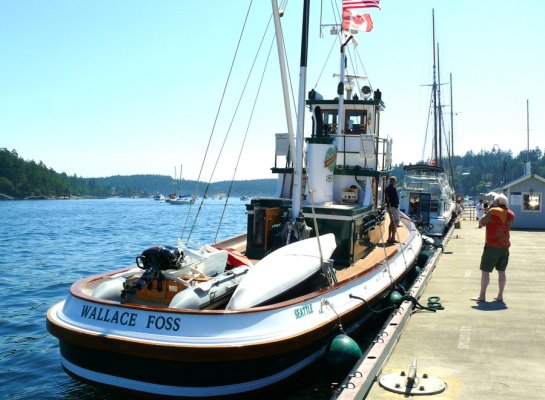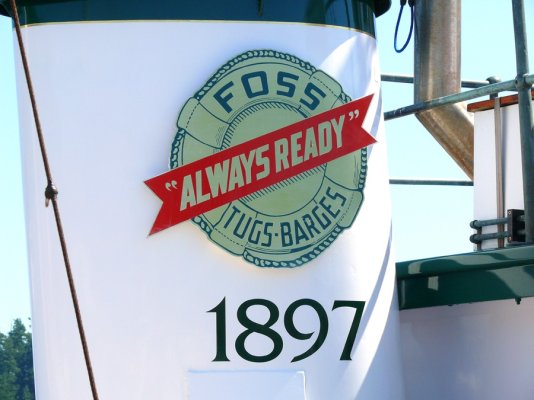Took the boat this past weekend to Friday Harbor to celebrate Carey's wife's birthday. We rafted together at our favorite spot on the inside of breakwater B so we would have the non-stop entertainment of watching the boats come to customs to check in. On Sunday this boat showed up to clear and it instantly reduced everything else in the harbor to "toy boat" status.
Built in 1897 as a steam-tug, she served with another tug company until that company was bought by Foss in the early 1900s. Renamed the "Wallace Foss" her pilothouse was modified and she was eventually converted to diesel power. "Wallace Foss" was a working tug in the fleet until 1972. The current owners keep her in what is probably better-than-new condition and use her as a family cruiser.
<table border="0" cellpadding="0" cellspacing="0" width="100%"><tbody><tr><td colspan="2">
</td></tr></tbody></table>
-- Edited by Marin on Wednesday 29th of July 2009 01:13:29 AM
Built in 1897 as a steam-tug, she served with another tug company until that company was bought by Foss in the early 1900s. Renamed the "Wallace Foss" her pilothouse was modified and she was eventually converted to diesel power. "Wallace Foss" was a working tug in the fleet until 1972. The current owners keep her in what is probably better-than-new condition and use her as a family cruiser.
<table border="0" cellpadding="0" cellspacing="0" width="100%"><tbody><tr><td colspan="2">
</td></tr></tbody></table>
-- Edited by Marin on Wednesday 29th of July 2009 01:13:29 AM




